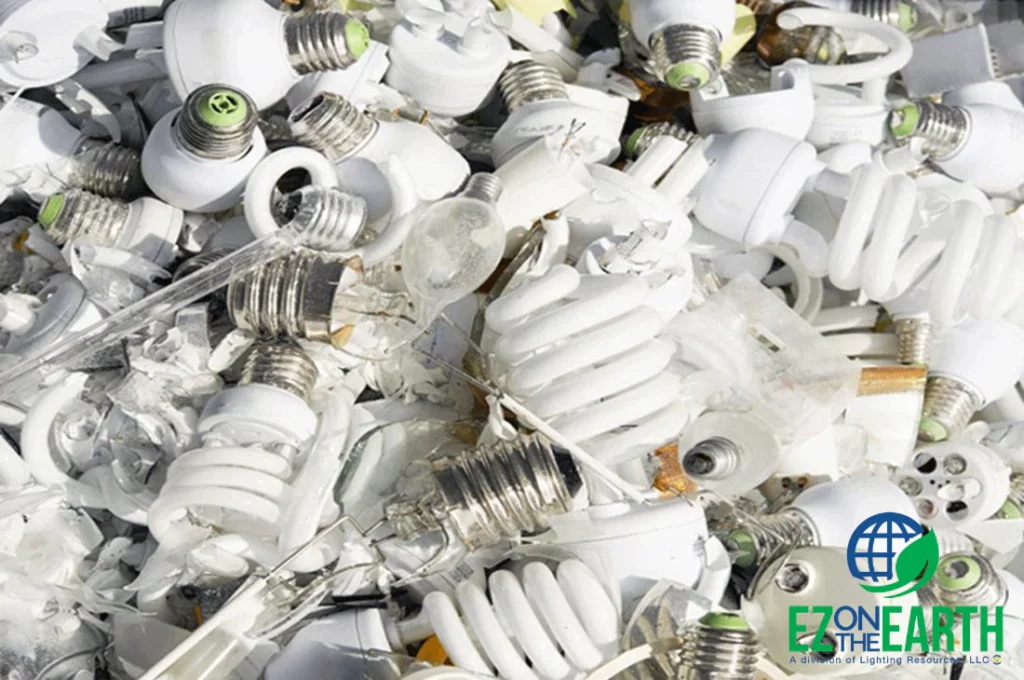Introduction
Imagine a world where every household item is responsibly recycled, from plastics to paper and even the very bulbs illuminating our homes. In our quest for a sustainable future, eco-friendly habits are crucial. This blog post will explore why bulb lamp recycling should be an integral part of your eco routine. Not only does it benefit the environment, but it also aligns with your personal goals of living sustainably. Stick around to learn the ins and outs of bulb lamp recycling and how you can contribute to a greener planet.
Understanding Bulb Lamp Recycling
The Environmental Impact of Improper Disposal
When we casually discard used bulb lamps in the trash, we might not realize the environmental impact. Bulb lamps, particularly those containing mercury, pose significant hazards. Mercury can leach into soil and water, contaminating ecosystems and posing health risks to animals and humans alike. This makes proper disposal and recycling more critical than many realize.
The Recycling Process and Its Benefits
Recycling bulb lamps involves several steps designed to safely extract and repurpose their components. First, the bulbs are collected and transported to a recycling facility, where they are crushed in a controlled environment. The mercury vapor is then captured and converted into a safer form. Glass, metals, and phosphor powders are separated and recycled into new products. This process not only reduces harmful waste but also recovers valuable materials, reducing the need for virgin resources.
Why You Should Recycle Your Bulb Lamps
Contributing to a Greener Environment
Recycling bulb lamps plays a significant role in reducing environmental pollution. By diverting these items from landfills, we prevent the release of hazardous substances into the ecosystem. This simple act can make a substantial difference in preserving our natural surroundings.
Aligning with Personal Eco-Friendly Goals
For those committed to living sustainably, recycling bulb lamps aligns perfectly with eco-friendly objectives. It’s a small yet impactful step toward reducing your carbon footprint. By incorporating such practices into your daily routine, you’re actively participating in the global effort to combat climate change and protect the environment for future generations.
How to Recycle Bulb Lamps at Home
Preparing Bulb Lamps for Recycling
Before recycling your bulb lamps, it’s essential to prepare them correctly. Start by carefully removing the bulbs from their fixtures and placing them in a secure, shatterproof container. Label the container to indicate it contains recyclable bulbs to avoid confusion. Ensure the bulbs are whole and not broken, as broken bulbs can release mercury vapors.
Options for Recycling
There are various options available for recycling bulb lamps. Local drop-off centers often accept used bulbs and have specific guidelines for their disposal. Some hardware stores and recycling facilities offer collection points. Alternatively, mail-back programs provide a convenient option, allowing you to send your bulbs to a recycling center via prepaid shipping. Research your local options to find the best method for you.
Highlighting the Impact
Case Studies and Statistics
To truly understand the positive impact of bulb lamp recycling, let’s look at some impressive statistics and case studies. For instance, the Environmental Protection Agency (EPA) reports that recycling one million fluorescent lamps can prevent the release of approximately 4,500 pounds of mercury. Additionally, cities that have implemented robust recycling programs have seen significant reductions in landfill waste and environmental contamination.
Addressing Common Concerns
Answering FAQs
Many people have questions and concerns about recycling bulb lamps. A common question is whether it’s safe to handle used bulbs. The answer is yes, as long as they are unbroken and handled with care. Another concern is the cost of recycling. While some programs may have a nominal fee, many local options are free or low-cost.
Debunking Myths
There are also several myths surrounding bulb lamp recycling. One myth is that it’s not worth the effort due to the small size of bulbs. However, the cumulative impact of recycling millions of bulbs is substantial. Another myth is that all bulbs are the same. In fact, different types of bulbs, such as CFLs and LEDs, have specific recycling requirements. Understanding these distinctions helps ensure effective recycling.
Encouraging a Sustainable Routine
Tips for a Broader Eco-Friendly Lifestyle
Incorporating bulb lamp recycling into your eco routine is just one step toward a sustainable lifestyle. Consider other habits such as reducing single-use plastics, composting organic waste, and conserving water. Simple actions like these collectively contribute to a greener planet. Joining local environmental groups and staying informed about sustainable practices can further enhance your efforts.
Conclusion
Recap of the Importance
Recycling bulb lamps is a simple yet powerful way to contribute to environmental preservation. By understanding the process, preparing bulbs correctly, and utilizing local recycling options, you can make a significant impact. It’s a practice that aligns with personal eco-friendly goals and supports broader sustainability efforts.
If you’re ready to take the first step towards a greener lifestyle, start by recycling your bulb lamps today. Together, we can illuminate a brighter, more sustainable future.



